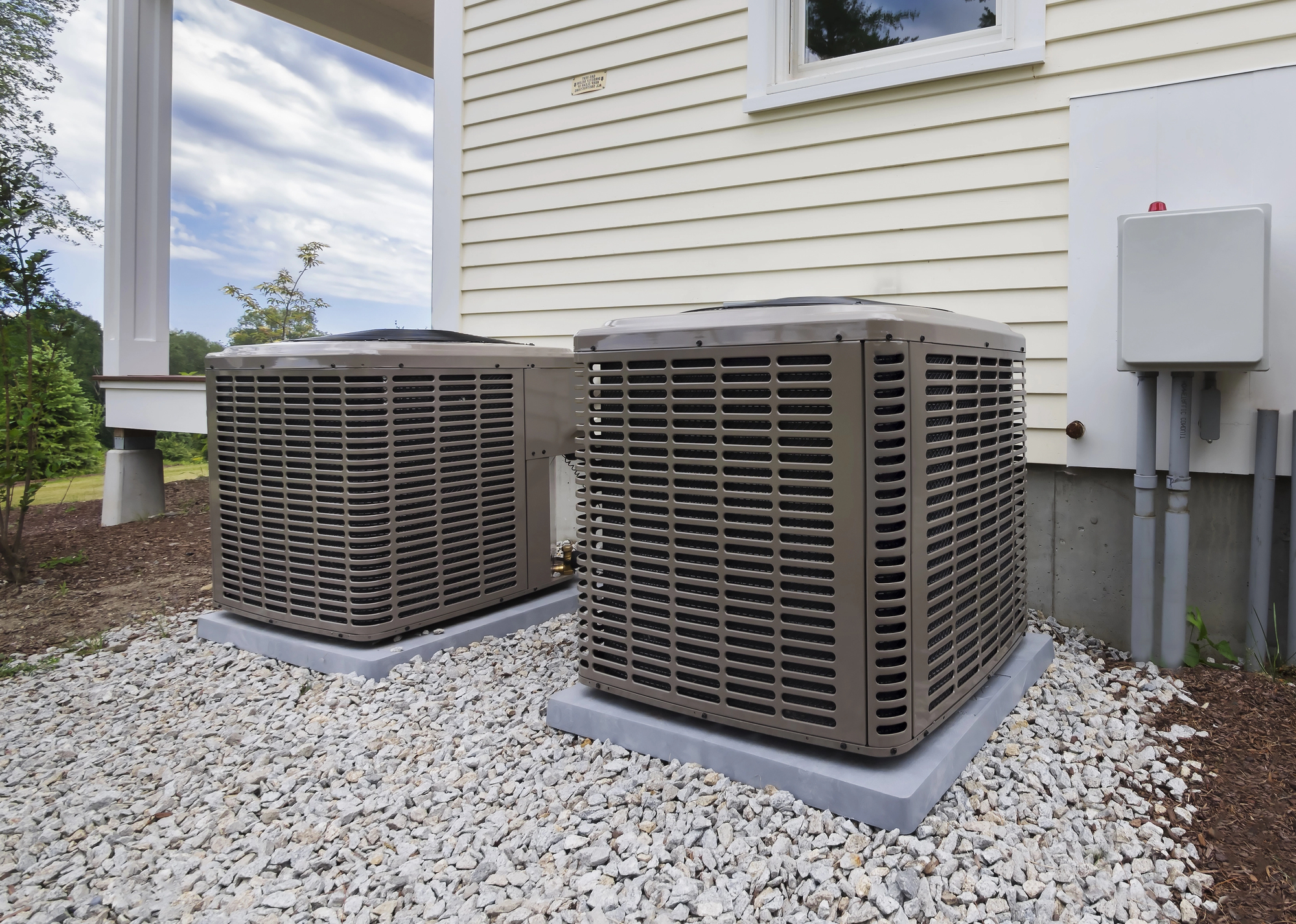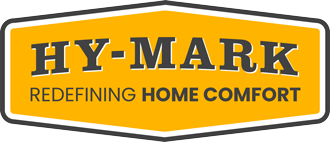As the world moves toward more sustainable living, Canadians are looking for ways to reduce their environmental impact while keeping their homes comfortable. One of the biggest energy consumers in our homes is the heating system, traditionally powered by furnaces. However, with rising energy costs and growing concerns over climate change, many homeowners are seeking alternative solutions that are both energy-efficient and environmentally friendly.
Heat pumps have emerged as an ideal option, offering a cleaner, more cost-effective way to heat and cool your home. Unlike furnaces, which rely on burning fossil fuels, heat pumps transfer heat from the air or ground, using far less energy. Heat pumps reduce your carbon footprint and lower energy bills, making them a popular choice for eco-conscious homes.
In this blog, we will explore what are heat pumps and furnaces, why heat pumps outshine furnaces in Canada, and how they can help you green your home.

Understanding Heat Pumps and Furnaces
Choosing between a heat pump and a furnace becomes easier when you know how both systems work.
What Are Heat Pumps?
A heat pump is an energy-efficient system that transfers heat rather than generating it. In winter, it extracts heat from the outside air (even in subzero temperatures) and moves it inside. In summer, the process reverses, cooling the home. The most common types of heat pumps include:
- Air-source heat pumps (ASHPs): Extract heat from the air.
- Ground-source (geothermal) heat pumps: Use the earth’s constant underground temperature.
- Ductless mini-split heat pumps: Provide targeted heating and cooling without requiring ductwork.
What Are Furnaces?
A furnace, commonly gas-powered, generates heat by burning fuel and distributing it through ducts. It only provides heating and requires a separate air conditioning system for cooling. Furnaces operate efficiently in extreme cold but have higher operational costs and environmental concerns.
9 Reasons Why Heat Pumps Are Better Than Furnaces in Canada
In Canada, where winters can be long and harsh, choosing the right heating system for your home is crucial. Traditional furnaces have been the go-to for many years, but with increasing energy costs and growing environmental concerns, more homeowners are turning to heat pumps as a viable alternative. Here’s why heat pumps are often better than furnaces in Canada.
1. Energy Efficiency
Heat pumps are significantly more energy-efficient than traditional furnaces. A furnace works by burning fuel to produce heat, which can be wasteful, primarily when the furnace is not operating at full efficiency.
On the other hand, heat pumps use electricity to transfer heat from one place to another. In the winter, they extract heat from the outside air, even in cold temperatures, and move it into your home. This process uses much less energy than burning fuel.
- Heat pumps can deliver up to 300% efficiency, meaning that for every unit of energy they consume, they can deliver up to three times that amount of heat.
- Furnaces typically operate at 80% to 95% efficiency, meaning much of the energy used in heating is lost.
- Over time, the energy savings from using a heat pump can significantly lower utility bills.
2. Lower Operating Costs
Heat pumps use less energy and have lower operating costs. While the initial investment may be higher than a furnace’s, the long-term savings are significant. Since heat pumps don’t rely on combustion, they require less maintenance and operate more efficiently, lowering energy bills.
- Heat pumps require less electricity to provide heating and cooling, cutting your monthly energy bills by up to 50%.
- Furnaces, especially older models, require regular maintenance to ensure efficiency, which can increase operational costs.
As energy prices continue to rise, heat pumps can offer a more affordable solution for homeowners who want to reduce their energy costs.
3. Dual Functionality (Heating & Cooling)
Heat pumps are a versatile solution for year-round climate control. Unlike furnaces that only provide heating, heat pumps can also function as air conditioners in the summer. This dual functionality means you only need one system to manage both heating and cooling needs, simplifying your home’s HVAC system.
- In winter, a heat pump extracts heat from the air and brings it inside.
- It reverses the process in the summer, extracting heat from inside the house and expelling it outside, acting as an air conditioner.
- This two-in-one system can save you the cost of purchasing and maintaining a separate heating and cooling system.
By partnering with the Hy-Mark Heating Service in Guelph team, you can integrate a heat pump system that efficiently provides both heating and cooling, saving money on separate systems and maintenance.
4. Environmentally Friendly
As concerns over climate change grow, many Canadians are looking for ways to reduce their environmental impact. Heat pumps are an environmentally friendly alternative to furnaces because they don’t burn fossil fuels, a significant source of greenhouse gas emissions.
- Since heat pumps rely on electricity, not combustion, they produce no direct emissions.
- If your electricity comes from renewable sources, the carbon footprint of your heat pump is even smaller.
- Using a heat pump can help reduce your home’s overall contribution to air pollution and greenhouse gas emissions.
5. Longer Lifespan
Heat pumps tend to have a longer lifespan than furnaces. While furnaces typically last 15 to 20 years, heat pumps can last 20 to 25 years with proper maintenance. This longer lifespan makes heat pumps a good investment for homeowners who want a long-term solution to their heating and cooling needs.
- A heat pump’s extended lifespan means you won’t have to replace it as often as you would a furnace.
- Proper maintenance ensures a heat pump’s longevity, ensuring you’ll enjoy reliable performance for many years.
6. Zoning Capabilities
Heat pumps, in and of themselves, do not provide zoning unless you are using ductless mini-split systems. These systems allow homeowners to control the temperature in different areas of the house, which is particularly beneficial for large homes or multi-story buildings. However, with the right strategies, furnaces can also achieve zoning capabilities.
- By using smart sensors or incorporating ductwork with dampers, furnaces can provide similar zoning benefits to heat pumps, allowing homeowners to heat individual zones rather than the entire house. This approach makes it easier to manage energy consumption and enhance comfort in the spaces that are used most, while saving energy in less frequently used areas.
- Zoning ensures personalized comfort, allowing you to target specific rooms or areas, ultimately improving energy efficiency and reducing waste.
7. Government Incentives
The Canadian government has been encouraging homeowners to adopt more energy-efficient systems by offering incentives for installing heat pumps. These incentives can significantly reduce the initial cost of installation, making it a more affordable option for many families.
- The federal and provincial governments offer rebates and tax incentives for installing heat pumps.
- These incentives help offset the upfront installation cost, making heat pumps more accessible to a broader range of homeowners.
8. Reduced Carbon Footprint
Using a heat pump reduces your carbon footprint because it doesn’t rely on fossil fuels like oil or natural gas. In Canada, where renewable sources increasingly power the electricity grid, the environmental benefits of heat pumps are even more significant. By making the switch, you’re contributing to a greener planet.
- Heat pumps produce fewer emissions compared to gas-powered furnaces.
- As Canada continues to expand its use of clean energy, heat pumps’ carbon footprint will continue to decrease.
9. Less Maintenance
Heat pumps don’t necessarily require less maintenance than traditional furnaces; however, the maintenance needs are different. While regular upkeep is still necessary to ensure optimal performance, heat pumps generally don’t require as frequent servicing, such as cleaning or replacing filters, as furnaces do.
Furnaces, on the other hand, require regular cleaning, maintenance, and inspections to operate efficiently.
In addition to maintaining performance, furnace maintenance is crucial for safety reasons, ensuring that the system is not operating in a hazardous condition. This includes preventing issues such as fire risks or, more importantly, the potential for carbon monoxide poisoning, which can be life-threatening for your family.
Heat pumps have fewer mechanical components that wear down compared to furnaces, which can lead to fewer costly repairs over time. However, the importance of regular maintenance should not be overlooked, as both systems require attention to operate safely and efficiently.
With proper maintenance, homeowners can have peace of mind, knowing their heating system is running smoothly and safely.
In Conclusion
Heat pumps offer a compelling alternative to traditional furnaces for homeowners in Canada. They combine energy efficiency, lower operating costs, dual functionality, and environmental benefits. With their longer lifespan, reduced carbon footprint, and ability to improve indoor air quality, heat pumps are an investment in comfort and sustainability. As energy prices rise and environmental concerns grow, switching to a heat pump is an innovative, eco-friendly choice that ensures long-term savings and a greener home.
If you’re looking to transition from traditional furnaces to heat pump solutions, contact us today.
